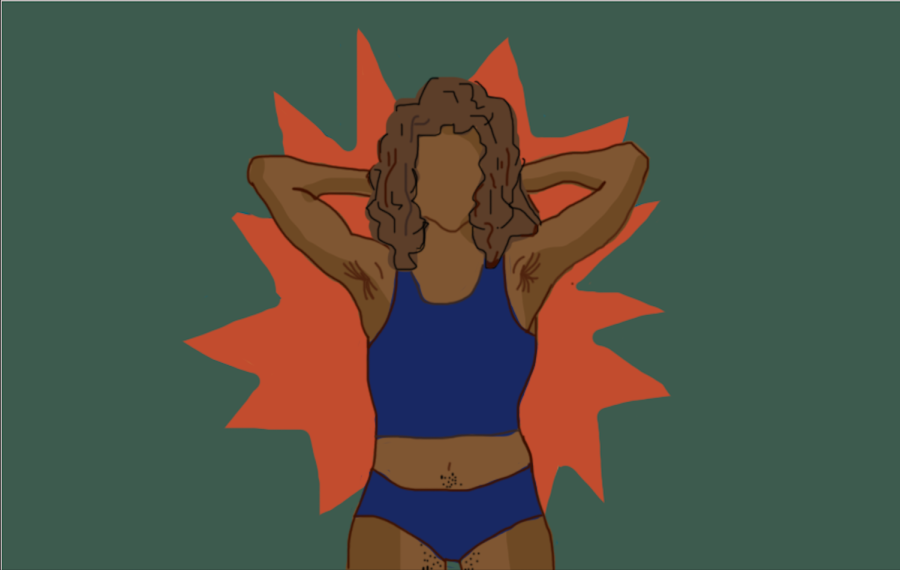Hair or Nair
Breaking the body hair stigma
Hair. We all have it and maybe not in the places where we want it, but only women are expected to remove it. Waxing or shaving has become normalized to the point where women feel shamed for having body hair.
The rise of the feminist movement in the mid-20th century came with a new standard of hairlessness for women. Women’s pubic hair, which was seen as a symbol of purity, was then removed to rebel against feminine standards created by men. The stigma regarding body hair shifted in the late 20th century, as shaving turned into an unspoken necessity for women.
In the 21st century, the hairless ideal is further perpetuated by countless Instagram posts, modeling catalogs and advertisements. A 2019 study showed that 98% of women have engaged in hair removal practices, a number that has dramatically increased since shaving has become normalized.
For Paly junior Maya Mukherjee, acknowledging society’s hairless norms is her first step to combatting beauty standards for women.
“I’ve learned to not mind [body hair] so much because I realized that it is normal and that everyone deals with it,” Mukherjee said.
While Mukherjee wishes to normalize women with body hair, like millions of other women, she finds herself reaching towards her razor.
“I think it’s becoming more normal to not bother with [shaving], but it’s also viewed as a statement,” Mukherjee said. “I don’t always want to be making a statement, although, I guess I’m fine with that, too.”
According to The Guardian, shaving product advertisements from corporations such as Dove or Gillette, ironically feature images of women shaving already shaved legs, a contradicting phenomenon that reinforces the hairless beauty standard.
Not only does Mukherjee find the constant pressure to shave unreasonable, but she also considers it disruptive.
“It’s inconvenient, and a lot of [shaving] methods are painful or expensive,” Mukherjee said. “It gets unrealistic when people expect women to just remove [hair] easily without discussing it when it’s actually a painful hassle.”
Although society demands that women remove their body hair, challenging this cultural norm is taboo.
“I think body hair is associated with being manly, which is a big part of why women are expected to [shave] and also why men are expected to have it,” Mukherjee said. “But it’s also a standard that people don’t talk about much. You’re supposed to do it but not discuss it.”
In order to be more accepting of the choices women make with their own bodies, Mukherjee hopes to have more honest conversations about body hair and beauty standards.
“If people were just more open about [body hair] and how they handled it, that would help the stigma,” Mukherjee said.
Art by Olivia Hau

2021-2022 - Staff Writer
2022-2023 - Photo Director
Hey! I joined C-Mag because of my love for journalism, especially the creative aspect. My favorite...










![Polynesian Club Performs at the Cultural Celebration Assembly
[Photo Courtesy of Savannah Earley]](https://cmagazine.org/wp-content/uploads/2025/04/PNG-image-600x535.jpeg)